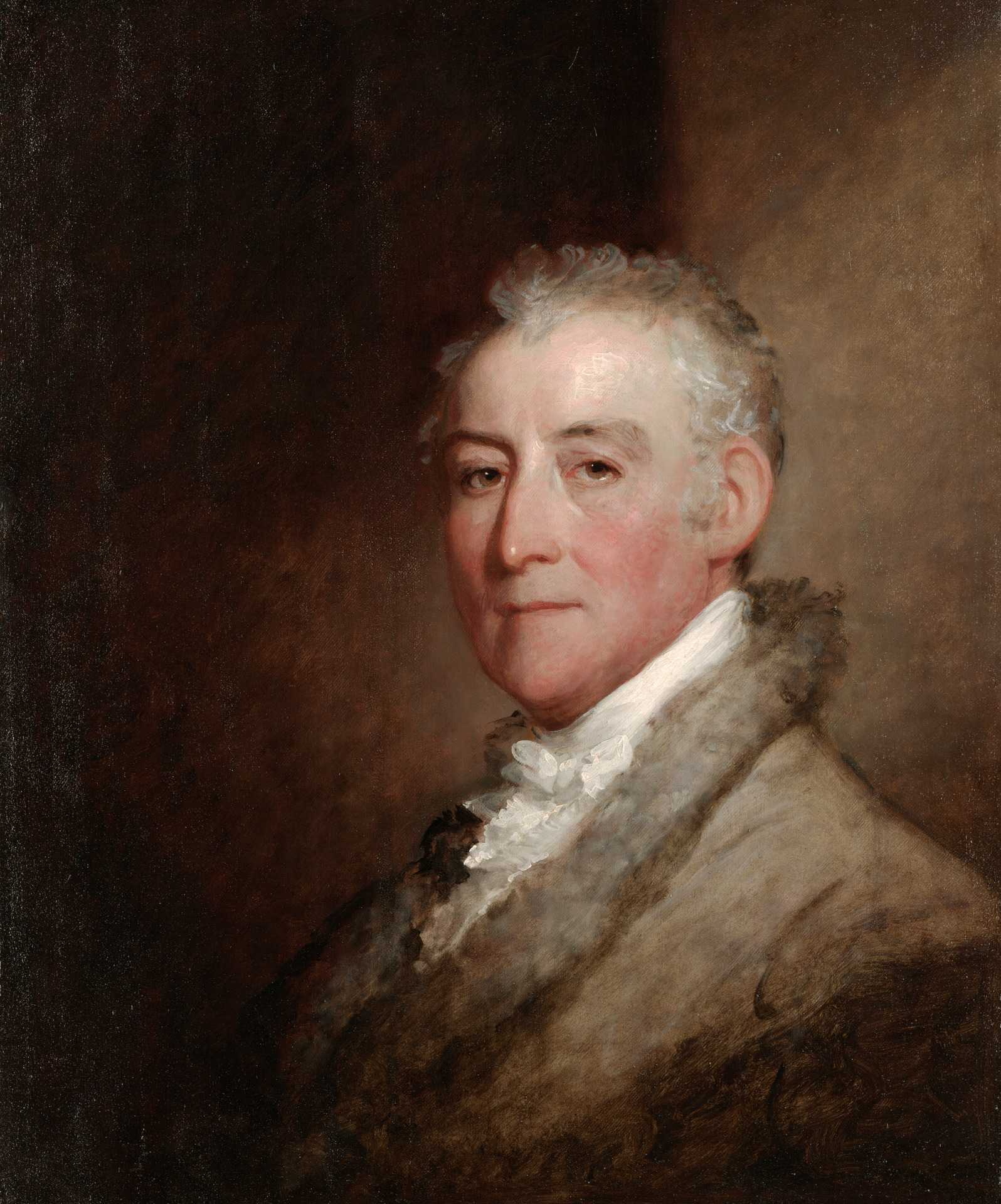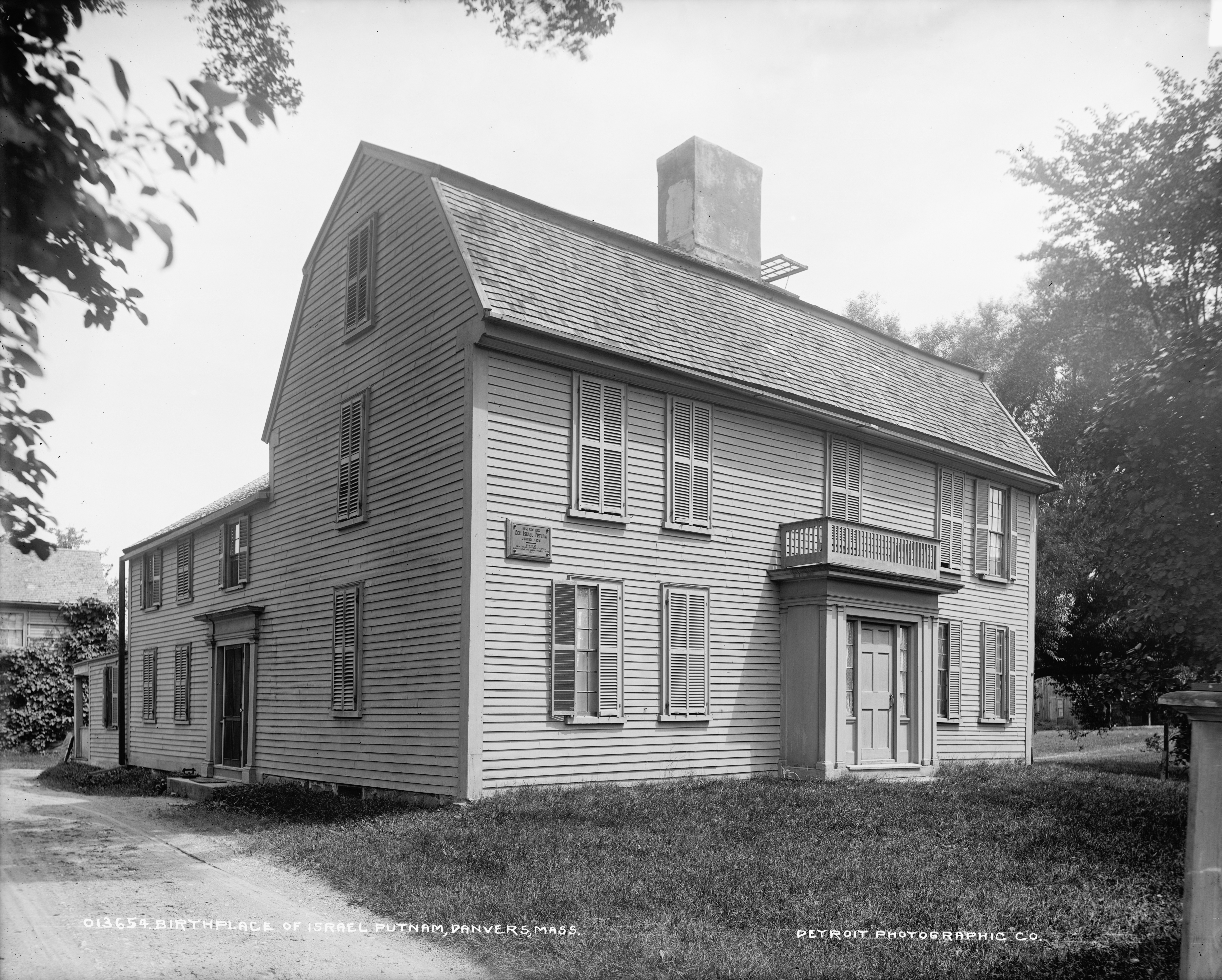|
John Pitcairn
Major John Pitcairn (28 December 1722 – 17 June 1775) was a Marine Service officer who was stationed in Boston, Massachusetts, at the start of the American War of Independence. Born in Scotland in 1722, Pitcairn joined the Naval Service at the age of 23 and was stationed in Canada during the French and Indian War serving as a captain of Marines. He arrived in Boston in 1774 and the next year was one of the leading officers of the Battles of Lexington and Concord, which marked the start of the American Revolution. Two months later in June, Pitcairn was killed in action during the Battle of Bunker Hill. Considered one of the most respected British officers by both his men and the colonists, he was buried at the Old North Church in Boston. Early life and education Pitcairn was born in 1722 in Dysart, a port town in Fife, Scotland. His parents were the Reverend David Pitcairn and Katherine (Hamilton) Pitcairn. An older brother, was William Pitcairn, who later became a botanis ... [...More Info...] [...Related Items...] OR: [Wikipedia] [Google] [Baidu] |
Dysart, Scotland
Dysart ( ; gd, Dìseart) is a former town and royal burgh located on the south-east coast between Kirkcaldy and West Wemyss in Fife. The town is now considered to be a suburb of Kirkcaldy. Dysart was once part of a wider estate owned by the St Clair or Sinclair family. They were responsible for gaining burgh of barony status for the town towards the end of the 15th century. The first record of the town was made in the early 13th century, its initial role being to settle civil matters between the church and landowners. During the middle of the 15th century, trade with the Low Countries began for salt and coal exportation. In the 16th and 17th centuries, trade expanded to the Baltic Countries. Dysart acquired two nicknames: "Salt Burgh" and "Little Holland" as a result. Following the sudden decline of the town's harbour caused by the closure of the Lady Blanche Pit, the town was amalgamated into the royal burgh of Kirkcaldy under an act of parliament in 1930. Urban clearance dur ... [...More Info...] [...Related Items...] OR: [Wikipedia] [Google] [Baidu] |
American War Of Independence
The American Revolutionary War (April 19, 1775 – September 3, 1783), also known as the Revolutionary War or American War of Independence, was a major war of the American Revolution. Widely considered as the war that secured the independence of the United States, fighting began on April 19, 1775, followed by the Lee Resolution on July 2, 1776, and the Declaration of Independence on July 4, 1776. The American Patriots were supported by the Kingdom of France and, to a lesser extent, the Dutch Republic and the Spanish Empire, in a conflict taking place in North America, the Caribbean, and the Atlantic Ocean. Established by royal charter in the 17th and 18th centuries, the American colonies were largely autonomous in domestic affairs and commercially prosperous, trading with Britain and its Caribbean colonies, as well as other European powers via their Caribbean entrepôts. After British victory over the French in the Seven Years' War in 1763, tensions between the motherland and her ... [...More Info...] [...Related Items...] OR: [Wikipedia] [Google] [Baidu] |
David Pitcairn
David Pitcairn M.D. (1749–1809) was a Scottish physician. Life Born on 1 May 1749 in Fife, he was eldest son of Major John Pitcairn, who was killed at the battle of Bunker's Hill; Robert Pitcairn (1752–) was his brother. He was sent to Edinburgh High School, the university of Glasgow, and then to the University of Edinburgh. He went on in 1773 to Corpus Christi College, Cambridge, where he graduated M.B. in 1779 and M.D. in 1784. In 1779 Pitcairn began practice in London, and was elected a fellow of the Royal College of Physicians on 15 Aug. 1785. He was five times censor, and in 1786 was also Gulstonian lecturer and Harveian orator. On the resignation of his uncle William Pitcairn, he was, on 10 February 1780, elected physician to St Bartholomew's Hospital, and held the post till 1793, when he resigned. He attained a large private practice. John Latham mentioned, in his treatise on gout and rheumatism, that David Pitcairn was the first to discover that valvular diseas ... [...More Info...] [...Related Items...] OR: [Wikipedia] [Google] [Baidu] |
John Trumbull
John Trumbull (June 6, 1756November 10, 1843) was an American artist of the early independence period, notable for his historical paintings of the American Revolutionary War, of which he was a veteran. He has been called the "Painter of the Revolution". Trumbull's ''Declaration of Independence (Trumbull), Declaration of Independence'' (1817), one of his four paintings that hang in the United States Capitol rotunda, is used on the reverse of the current United States two-dollar bill. Early life Trumbull was born in Lebanon, Connecticut, in 1756, to Jonathan Trumbull and Faith (née Robinson) Trumbull. His father served as governor of Connecticut from 1769 to 1784. Both sides of his family were descended from early Puritan settlers in the state. He had two older brothers, Joseph Trumbull (commissary general), Joseph Trumbull, the first commissary general of the Continental Army in the Revolutionary War, and Jonathan Trumbull Jr., who became the second Speaker of the House of the ... [...More Info...] [...Related Items...] OR: [Wikipedia] [Google] [Baidu] |
Peter Salem
Peter Salem (October 1, 1750 – August 16, 1816)BlackPast.org "Salem, Peter" was an from Massachusetts who served as a U.S. soldier in the . Born into slavery in , he was freed by a later master, Major Lawson Buckminster, to serve in the local militia. He then enlisted in the |
Israel Putnam
Israel Putnam (January 7, 1718 – May 29, 1790), popularly known as "Old Put", was an American military officer and landowner who fought with distinction at the Battle of Bunker Hill during the American Revolutionary War (1775–1783). He also served as an officer with Rogers' Rangers during the French and Indian War (1754–1763), when he was captured by Mohawk people, Mohawk warriors. He was saved from the ritual burning given to enemies by the intervention of a French officer with whom the Mohawk were allied. Putnam's courage and fighting spirit became known far beyond his home of Connecticut's borders through the circulation of Folklore, folk legends in the American colonies and states celebrating his exploits. Early life Israel Putnam was born in 1718 in Salem Village (now Danvers, Massachusetts, Danvers), Massachusetts to Joseph and Elizabeth (Porter) Putnam, a prosperous farming Puritan Putnam family, family. His parents had opposed the Salem witch trials in the 1690 ... [...More Info...] [...Related Items...] OR: [Wikipedia] [Google] [Baidu] |
The Death Of General Warren At The Battle Of Bunker Hill
''The Death of General Warren at the Battle of Bunker's Hill, June 17, 1775'' refers to several oil paintings completed in the late 18th and early 19th century by the American artist John Trumbull depicting the death of Founding Father Joseph Warren at the June 17, 1775, Battle of Bunker Hill, during the American Revolutionary War. Warren, an influential Massachusetts physician and politician, had been commissioned as a general but he served in the battle as a volunteer private. He was killed during or shortly after the storming of the redoubt atop Breed's Hill by British troops. The paintings are iconic images of the American Revolution. Trumbull painted several versions, including the one held by the Museum of Fine Arts, Boston (dated between 1815 and 1831). This was commissioned by the Warren family and passed down through the family before being acquired by the museum. Another, larger version (dated 1834) is held by the Wadsworth Atheneum in Hartford, Connecticut. Trumbu ... [...More Info...] [...Related Items...] OR: [Wikipedia] [Google] [Baidu] |
The Canadas
The Canadas is the collective name for the provinces of Lower Canada and Upper Canada, two historical British colonies in present-day Canada. The two colonies were formed in 1791, when the British Parliament passed the '' Constitutional Act'', splitting the colonial Province of Quebec into two separate colonies. The Ottawa River formed the border between Lower and Upper Canada. The Canadas were merged into a single entity in 1841, shortly after Lord Durham published his ''Report on the Affairs of British North America''. His report held several recommendations, most notably union of the Canadas. Acting on his recommendation, the British Parliament passed the ''Act of Union 1840''. The Act went into effect in 1841, uniting the Canadas into the Province of Canada. The terms "Lower" and "Upper" refer to the colony's position relative to the headwaters of the St. Lawrence River. * Lower Canada covered the southeastern portion of the present-day province of Quebec, Canada, and (unt ... [...More Info...] [...Related Items...] OR: [Wikipedia] [Google] [Baidu] |
Oxford University Press
Oxford University Press (OUP) is the university press of the University of Oxford. It is the largest university press in the world, and its printing history dates back to the 1480s. Having been officially granted the legal right to print books by decree in 1586, it is the second oldest university press after Cambridge University Press. It is a department of the University of Oxford and is governed by a group of 15 academics known as the Delegates of the Press, who are appointed by the vice-chancellor of the University of Oxford. The Delegates of the Press are led by the Secretary to the Delegates, who serves as OUP's chief executive and as its major representative on other university bodies. Oxford University Press has had a similar governance structure since the 17th century. The press is located on Walton Street, Oxford, opposite Somerville College, in the inner suburb of Jericho. For the last 500 years, OUP has primarily focused on the publication of pedagogical texts and ... [...More Info...] [...Related Items...] OR: [Wikipedia] [Google] [Baidu] |
William Pitcairn
William Pitcairn (9 May 1712 – 25 November 1791) was a Scottish physician and botanist. He was born in Dysart, Fife, the second son of the Revd David Pitcairn. A younger brother was John Pitcairn, who became a British Marine officer and was killed at the Battle of Bunker Hill; John's son and William's nephew was midshipman Robert Pitcairn, for whom Pitcairn Island is named. William Pitcairn studied first at the University of Leiden and then at the University of Rheims, where he was awarded his MD. He then sent to England and obtained a second degree in medicine from Oxford University in 1749. He moved to London and became physician to St Bartholomew's Hospital. He became a Fellow of the Royal College of Physicians The Royal College of Physicians (RCP) is a British professional membership body dedicated to improving the practice of medicine, chiefly through the accreditation of physicians by examination. Founded by royal charter from King Henry VIII in 1 ... and gave ... [...More Info...] [...Related Items...] OR: [Wikipedia] [Google] [Baidu] |
The London Gazette
''The London Gazette'' is one of the official journals of record or government gazettes of the Government of the United Kingdom, and the most important among such official journals in the United Kingdom, in which certain statutory notices are required to be published. ''The Gazette'' is not a conventional newspaper offering general news coverage. It does not have a large circulation. Other official newspapers of the UK government are ''The Edinburgh Gazette'' and ''The Belfast Gazette'', which, apart from reproducing certain materials of nationwide interest published in ''The London Gazette'', also contain publications specific to Scotland and Northern Ireland, respectively. In turn, ''The London Gazette'' carries not only notices of UK-wide interest, but also those relating specifically to entities or people in England and Wales. However, certain notices that are only of specific interest to Scotland or Northern Ireland are also required to be published in ''The London Gazette ... [...More Info...] [...Related Items...] OR: [Wikipedia] [Google] [Baidu] |







.jpg)
.jpg)